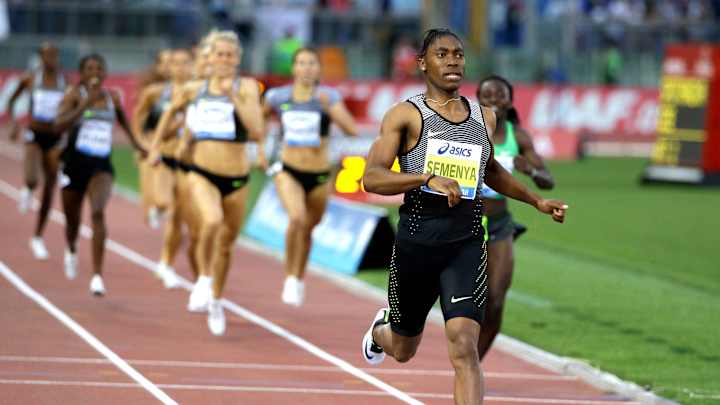Hyperandrogenism explained and what it means for athletics

STELLENBOSCH, South Africa (AP) In the wake of the Caster Semenya sex-test scandal at the 2009 world championships, track and field's international governing body introduced contentious rules making women with a condition that caused them to produce high levels of natural testosterone ineligible to compete until they artificially lowered those levels.
The IAAF's hyperandrogenism regulations, imposed in 2011 and applied to Semenya and others, were criticized as unethical, discriminatory and against the Olympic charter, and without scientific backing. Last year, they were challenged at sport's highest court by an Indian sprinter and shelved until at least July 2017.
Here are the regulations explained and what the hyperandrogenism debate means for track and field.
---
WHAT IS HYPERANDROGENISM?
Hyperandrogenism is a medical condition which causes a person to produce high levels of hormones. There are various forms, but the one the IAAF regulated was hyperandrogenism in intersex women that led to them having testosterone levels that were much higher than the average for females. Men and women produce testosterone, but men generally produce much more.
---
HOW DID THE HYPERANDROGENISM REGULATIONS WORK?
Under the rules, the IAAF would initiate a three-stage medical examination process if it suspected a female athlete had hyperandrogenism. Often a sudden and dramatic improvement in performance led to the suspicion. The IAAF believes testosterone is the most significant factor influencing athletic performance, and so feels hyperandrogenic women have an unfair athletic advantage over other female athletes and their testosterone should be lowered.
---
THE CLOAKED HISTORY OF SEX TESTING IN ATHLETICS: ''THEY JUST WANTED TO KEEP IT TO THEMSELVES''
Track and field has had sex testing for decades. Initially it was a basic physical examination and later a chromosome test. But the case of Spanish hurdler Maria Martinez-Patino, who was unfairly thrown off the Olympic team after a chromosome test in the mid-1980s, led the IAAF to instead consider testosterone levels when deciding who was eligible to compete as a woman. However, the IAAF did not formally introduce the testosterone rules until 2011, and only after Semenya came along. Before then, it preferred to manage the issue of intersex athletes and hyperandrogenism quietly and on a case-by-case basis, said Joanna Harper, an expert on gender in sports and a consultant to the IAAF.
''I think they just wanted to keep it to themselves,'' Harper said. ''Clearly they did not anticipate the uproar that would happen over a case like Semenya's. It was clearly a mistake on their part. But it did work for 15 years or so. Mostly because there wasn't any fuss made about it.''
---
TEMPORARY VICTORY FOR HYPERANDROGENIC WOMEN
Last year, Indian sprinter Dutee Chand took the IAAF to the Court of Arbitration for Sport claiming that she was being discriminated against because of her high testosterone levels. Experts for Chand also showed that the dividing line between men and women when it came to testosterone wasn't as clear as the IAAF suggested. Some elite male athletes had testosterone levels in the female range. Because of this, the court awarded a temporary victory to Chand. It ordered the rules to be shelved until the IAAF could provide evidence to show there was a clear difference between male and female testosterone levels, and how big an advantage the extra testosterone gave hyperandrogenic women.
---
WHAT NOW FOR THE RIO OLYMPICS?
Freed from the testosterone regulations, Semenya could break the 33-year-old world record in the 800 meters at the Olympics in Rio, South African sports scientist Ross Tucker said. Tucker said the boost Semenya gets could also enable her to dominate in the 400 meters, an event she hasn't tried out at the most elite level. Yet after the Olympics, the IAAF might be able to present the evidence to CAS in support of its hyperandrogenic regulations, and Semenya may have to return to suppressing her testosterone levels. Harper, the gender in sports expert, estimates between 5-10 intersex women will compete in track and field at the Olympics amid the suspension of the regulations.
